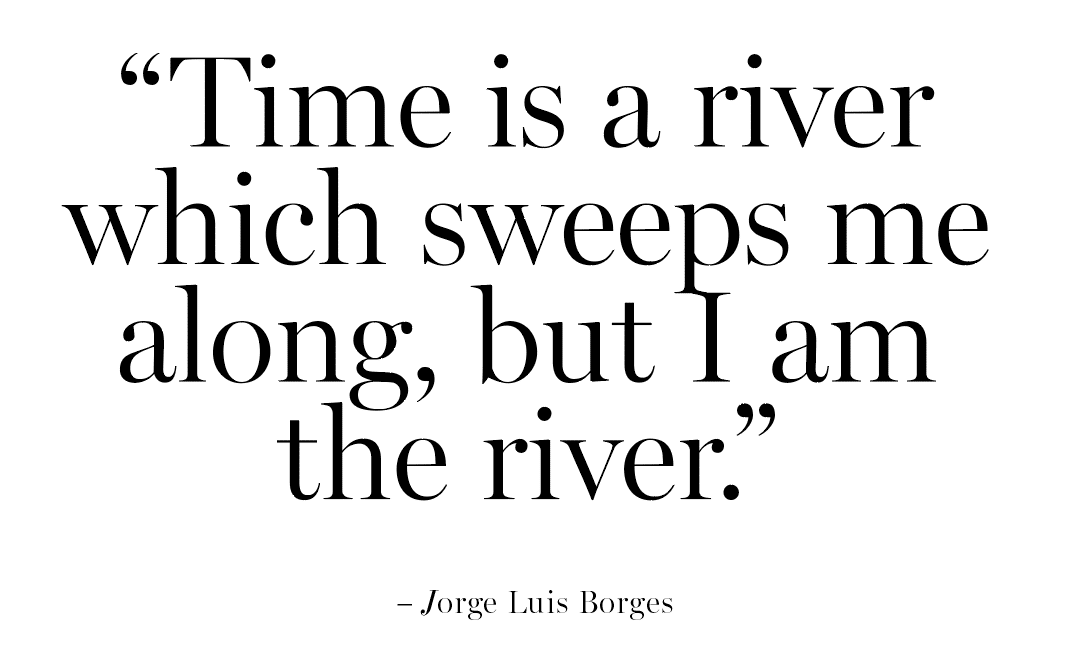
Suspended in a tubular capsule, 32,000 feet above sea level, the shades of a hundred tiny windows pulled shut and the aggressive hum of an industrial air conditioner muffling human voices to a garbled drone. There is no space in the modern technological world more surreal, more removed from the natural human habitat, more overwhelmingly foreign to the living organism, than this. A long-haul flight from Australia to Europe, across three continents and three time zones, where day becomes night becomes day becomes night again over the course of 30-odd hours and one change of underwear. I’ll admit I’m not a great flyer. I can’t sleep upright (and sadly a writer’s budget won’t afford me business class) and the slightest jolt of turbulence sends my stomach sideways. Sleeping pills generally don’t work very well (such is the power of true anxiety) and so for the duration of any long-haul flight I’m awake, bolt upright, painfully aware of every second slough by in a tedious procession of protracted moments. Recently, enduring two of these bug-eyed journeys in the space of just one week offered me a lot of time to contemplate the nature of time, or more specifically the nature of our relationship to it. Hovering in this bizarre artificial world of oddly spaced meals and the constant blinking blue light of an entertainment box, time, or our sense of it, does strange things. It stretches and shrinks, pivots on itself, disappears at one place and then re-emerges at another, moving like a centrifuge in one moment and expanding like a wide vacant abyss the next. Your innate body clock, set to the rhythm of the departure zone, goes offline somewhere over the Atlantic Ocean when dinner is served as breakfast and the sky outside indicates that neither should be happening. At this point, in the absence of sleep, the absurdity of the situation leaves no real option aside from involuntary surrender.
To preserve some semblance of sanity you simply have to stop clocking in, stop measuring, estimating and reviewing where you sit in time and just let each moment unfurl. In that instant of mentally releasing time as a reference point, both time and space dissolve into one vast open moment where a state of acceptance drops into a state of presence – presence with what is. Even if ‘what is’ is as preposterous as lukewarm scrambled eggs for a 3am dinner and arriving at your destination yesterday.
Whether time is an objectively real phenomenon or an illusory construct designed as a means of organising our reality – or both – is a conundrum that has had philosophers and physicists playing theoretical racket-ball for thousands of years. It’s a question I’m not even going to attempt to address as an armchair philosopher because whatever the ‘reality’ of time may be, on planet Earth in the 3-D human realm it seems to be a thing – a quantifiable and profoundly felt thing. Here we experience time through the awareness of past memories, future projections and the acute sensation of moments passing at measurable speed. “Look at the time! It’s already 8:30, I’m supposed to be at the office by 9 and I’m going to miss the 8:45 train”, or, “Look at the time! I’m already 30 and I haven’t done all the things I set out to do before the clock struck ‘old’.”
For us, time exists in a very real way and how closely we do or don’t adhere to the construct of time has very real consequences in our very real lives. But the havoc that a long-haul flight, for example, plays with our sense of time raises an important question: even if time exists as a measurable, albeit intangible, ‘thing’ based on the consistent pace of our planet’s orbit, is our experience of it actually subjective? In which case, can we manipulate our perception of time to psychologically overcome the dread of a ticking clock and live purely in the moment with all the realities of being a human in the world?
I think we can all agree that in our modern industrial society we are, for want of a less dramatic term, enslaved by the clock. Personally speaking, my relationship with time has always been fairly fraught. Generally, if my mind begins to contemplate the diurnal revolutions of a clock hand and the speed at which that appears to be happening, it will usually spiral directly into panic, causing time – or my perception of time – either to slow down or speed up depending on the situation.
There’s either not enough time suddenly, or something is taking way too much of it. Either way, time, in all its cool indifference, is the enemy.
But anxiety around the concept of time is a relatively recent phenomenon. It’s really only been in the last couple of centuries that the clock has come to play a central role in the lives of humans. Before the industrial revolution time wasn’t measured in hours, minutes and seconds but rather in the cycles and rhythms of nature. The sun’s daily journey across the sky, the phases of the moon and the passage of the seasons were an ancient human’s best indication of roughly where they stood in time. Early attempts at measuring time via primitive devices like sundials and clepsydrae, or water clocks, were far from an exact science and only loosely applied. For eons humankind responded to natural cues, shockingly able to complete tasks, maintain relationships and contribute to the evolution of the species without the mathematical precision we apply to time today.
The earliest incarnation of a mechanical clock was apparently developed in the late 13th century, but it wasn’t until 1657 that the invention of the pendulum allowed for the addition of a minute hand, succeeded almost two centuries later by a second hand. And there it began, clocking on and clocking off, the exact measurement of hours and minutes allowing a burgeoning capitalist system to utilise time as a commodity for the first instance in history.
Since then the clock has maintained a pole position in the cultural consciousness and the cardinal mantra of capitalism, ‘time is money’, has become deeply ingrained in the modern mindset. We are a society beholden to time like none that preceded us, and while many of us no longer work in the factories of major industries, the ‘clocking on, clocking off’ mentality has nonetheless been bred in – only nowadays there’s a whole lot of clocking on and not much clocking off. With the invention of smartphones and social media, the tyranny of time is felt more closely than ever. Attached to devices, we are acutely aware of our daily expenditure of time – how much we’re ‘wasting’, how much we are ‘spending’, and how much we’re being paid for. The systemic anxiety precipitated by the ticking clock (or more relevantly, the precision iPhone) that pervades our psyche has become so embedded we almost believe it’s just a normal part of being alive – wired in as a result of the awareness that our lives will one day expire and thus we need to make the most of every passing second. But the fluid relationship earlier societies had with time before the invention of the clock would indicate that our present state of hyper-vigilance is probably not ‘normal’ and may in fact be unnecessary and even damaging.
Stuart Ringholt is an artist out to mess with our perception of time – and push a few anxiety buttons – by ever so slightly tweaking the pace at which it is measured. At the Museum of Contemporary Art in Sydney sits his stately three-metre high by two-metre wide clock you couldn’t miss if you tried – one rarely sees clocks of this size up close. Working closely with a horologist, Ringholt designed the second hand to tick fractionally faster than it normally would so that an hour on this clock passes in 45 minutes and a day in 18 hours. When I first saw the clock, before I realised something was amiss, I felt immediately unsettled, my first thought being ‘here stands the ultimate visual representation of pressure’. The way Ringholt sees it, the fictional proposition of a faster clock means that while we may have fewer hours in a day we have more days in a year – a lot more yesterdays but also many more tomorrows.
“Consider that the faster clock is accurate,” he says. “What would it be accurate for?”
Ringholt’s adjusted clock offers us an opportunity to consider how we respond to the sensation of time passing and experiment with shifting our perception of it – to realise that time is perhaps relative and somewhat bendable.
We’ve all experienced those moments in which time seems to speed up, slow down, or disappear altogether as though we suddenly lose it in space, momentarily breaking free of its stranglehold on our awareness. A sense of losing time is characteristic of the altered states of consciousness experienced by artists absorbed in the act of creating, yogis in deep meditation and basically anyone in the throes of falling madly in love. Like diving into a wormhole and popping out the other side, moving through space in these heightened states somehow feels instantaneous, and the present moment swells to encompass all that exists. Total immersion in the expanse of the ‘now’ then becomes the key to evaporating time – the clock has no authority over the mind that is completely engrossed in where it is, who it’s with and what it’s doing. “Time is a river which sweeps me along, but I am the river,” wrote the poet Jorge Luis Borges.
In states of creative flow or sensory rapture we step out of time’s rapid current and again become the river itself, experiencing only what we see, feel, hear and touch wherever we are in space. In these states of total absorption, not only are we no longer conscious of to-do lists and schedules but of death, ageing, apprehension about the future and regret over the past. In a state of timelessness, perceived limitations give way to abundant possibilities – worry, anxiety and depression temporarily ‘clock off’ and all we’re left with is the purity of an experience. These typically scarce but profound moments in life offer a sense of liberation and relief from the devices that keep us bolted to the humdrum of reality. The question is do we need to wait for artistic inspiration, meditate for eight hours a day, take a bunch of psychedelics or fall in love over and over again to enjoy brief moments of freedom from the shackles of time? Can we uncover the mechanism behind the altered perception of time that occurs in these states to access more of it in our daily lives?
Warren Meck, a professor of psychology and neuroscience at Duke University, North Carolina, has observed through rodent studies that the brain measures time very differently from a clock. He suggests that the brain produces pulses to measure long stretches of time and that it ‘listens’ to the pulses less like a mechanical sequence and more like an elegant arrangement of music. Interestingly, the pulse-inducing neurons are embedded in the regions of the brain that process emotionally charged sensory experiences.

The precise mechanics of how these pulsing neurons gauge time in the brain is fairly complex, but it’s worth noting that a neurotransmitter we’re all familiar with, dopamine, is one of them. In an extensive study conducted at UCLA in 2007, it was shown that certain stimulant drugs like cocaine and methamphetamine, which flood the brain with pleasure-inducing dopamine, also alter our perception of time. In the study, scientists gathered together a group of healthy people and a group of stimulant addicts and rang a bell after 53 seconds of silence. The healthy group estimated that that an average of 67 seconds had passed whereas the stimulant addicts guessed an average of 91 seconds. This is a considerable difference that shows that heightened brain states could potentially have an elongating effect on our subjective experience of time. What we describe as ‘losing’ time may in fact be registering in our brains as gaining time, which makes sense.
Dopamine is released any time we’re fully engaged in a pleasurable immersive experience like dancing to great music, laughing uncontrollably with friends, or having sex with someone we’re really into. When we’re absorbed in these activities, suddenly it seems as if we have all the time in the world, the sense of panic around the clock ticking dissolves and all we’re experiencing is one pivotal moment. The irony is that in hindsight the time always seems to have gone more quickly than it should, but that’s less to do with how we perceived time passing in the moment and more to do with longing for a state of being we simply can’t maintain – of course the best moments of your life passed too quickly.
But the reality is, at this point in our evolution, it’s not possible, or even desirable, to exist in a permanent state of timeless bliss. Time is obviously of value to us. Without an appropriate sense of time we wouldn’t be able to orientate ourselves in 3-D reality. In fact, people with a condition called dyschronometria, which causes the sufferer to lose the ability to gauge time, find it very difficult to function.
But while we need some degree of reverence for time, we also need to keep it in perspective. George Woodcock wrote, “Complete liberty implies freedom from the tyranny of abstractions as well as from the rule of men.” Time is an abstraction, and as an abstraction there is some flexibility as to how we choose to experience it. Time can be either a merciless dictator or a useful consort, depending on the way we utilise its function. By consciously limiting the amount of times we refer to the clock throughout the day, by making sure we ‘clock off’ and allocate space to lose (or rather, gain) time, and by engaging in the kinds of immersive experiences that keep us anchored to the present moment, we can dip into those feelings of pure aliveness and creativity characterised by a sense of timelessness.
Stimulant drugs are ill-advised, but meditation, the act of making art, making love, or simply paying close attention to the beauty of a unique moment are entry points into that state with very few negative side effects. We are not (yet) the masters of time but neither are we its victims. As Borges said, it is a river that sweeps us along but we are the river. Understanding that we have a hand in steering the flow of time affords us some freedom from the anxiety of its unrelenting procession. We may not have forever, but it’s possible, at least occasionally, to feel like we do. “If we take care of the moments,” wrote Maria Edgeworth, “the years will take care of themselves.”



